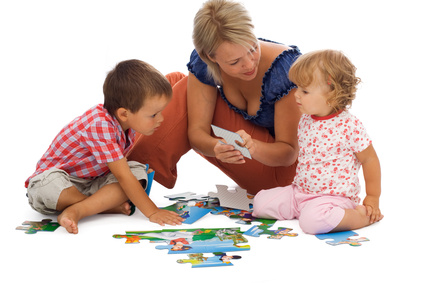5 Tips To Create A Family Rhythm
Ever have one of those days when nothing your family does seems to go as planned? I have. Every interaction feels disjointed, out of sync, confused, out of sorts. Everything discussion seems to jumble together and even the simplest task becomes difficult. The emotional and physical needs and desires of each family member seem to pile on top of the one another, compete for attention, and clash in horrid dissonance. Relationships suffer as people miss cues, interrupt in mid-phrase, and crescendo into arguments over silly misunderstandings. During these days of dissonance, I find myself jumping into the flow of conversation at the wrong time and disrupting what little flow seemed to exist. Everyone grows more agitated and irritable. Nothing, and nobody, seems in tune with anyone else.
of sync, confused, out of sorts. Everything discussion seems to jumble together and even the simplest task becomes difficult. The emotional and physical needs and desires of each family member seem to pile on top of the one another, compete for attention, and clash in horrid dissonance. Relationships suffer as people miss cues, interrupt in mid-phrase, and crescendo into arguments over silly misunderstandings. During these days of dissonance, I find myself jumping into the flow of conversation at the wrong time and disrupting what little flow seemed to exist. Everyone grows more agitated and irritable. Nothing, and nobody, seems in tune with anyone else.
 of sync, confused, out of sorts. Everything discussion seems to jumble together and even the simplest task becomes difficult. The emotional and physical needs and desires of each family member seem to pile on top of the one another, compete for attention, and clash in horrid dissonance. Relationships suffer as people miss cues, interrupt in mid-phrase, and crescendo into arguments over silly misunderstandings. During these days of dissonance, I find myself jumping into the flow of conversation at the wrong time and disrupting what little flow seemed to exist. Everyone grows more agitated and irritable. Nothing, and nobody, seems in tune with anyone else.
of sync, confused, out of sorts. Everything discussion seems to jumble together and even the simplest task becomes difficult. The emotional and physical needs and desires of each family member seem to pile on top of the one another, compete for attention, and clash in horrid dissonance. Relationships suffer as people miss cues, interrupt in mid-phrase, and crescendo into arguments over silly misunderstandings. During these days of dissonance, I find myself jumping into the flow of conversation at the wrong time and disrupting what little flow seemed to exist. Everyone grows more agitated and irritable. Nothing, and nobody, seems in tune with anyone else. There is a solution to those days…a remedy for the out-of-sync family. That remedy involves developing a family rhythm. Developing a family rhythm helps family members become more “in tune” with one another. Through a family rhythm, family members get more in sync and they flow together more naturally, weaving a counterpoint of activities and ideas that fit together in beautiful harmonies. Families with a good family rhythm get along better, enter into conversation at opportune moments, and understand one another more easily. They follow one another’s cues and find their daily lives harmonizing with the family as a whole. Family members learn to take turns playing the lead and willingly “play second fiddle” when another family member takes the lead. Everything seems more fluid, relaxed, and enjoyable. Periods of dissonance are resolved. Moments of complexity and hurry are followed by rest and intimacy. You can imagine how this family rhythm reduces stress and creates greater connection. So, what does a family rhythm involve and how do we create a family rhythm? Here are 5 tips to help develop your family rhythm.
1. To develop a family rhythm, think about your typical day and week…and, think about your family values and priorities. Here are some questions to consider: When do people get up? When do various family members have the highest energy? When is energy at its lowest? What activities do you enjoy as a family? What activities do you enjoy as individuals? What do you do on a weekly basis—worship, family nights, movies…? Do these activities fit into your family values and priorities? Why or why not? As you answer these questions, consider how these activities fit together. You may find that you have to remove some activities from your schedule in order to have rhythm and include only those activities that harmonize with your family values. It becomes hard to have a healthy family rhythm when your family life is filled with frenetic activities that keep you rushing from one activity to another. So, really focus on your family priorities and which activities harmonize with those values.
2. A healthy family rhythm includes time for play. Families that play together find one another’s rhythm. They learn to read one another’s cues and respond to those cues. Whether they be cues of joy or discomfort, play teaches us to recognize them and respond to them in a helpful way.

3. A healthy family rhythm includes time for work. Everyone in a family can contribute to the family rhythm and stability. That means everyone has a job to fulfill. When everyone does their part, families find a healthy rhythm. Perhaps the younger children will simply dust or pick up toys, but they can participate in the “work of the home.” This makes everyone a part of the home. Everyone learns that they have a contribution to make. Everyone leans to appreciate the contribution of others.
4. A healthy family rhythm also includes time for rest. One of my favorite ways to ‘get in tune’ with my family is to rest together. Some families may rest by taking a nap at the same time. Others find that the best way to rest is taking a walk, listening to music, talking over a cup of coffee, or enjoying a time of recreation together. Whatever helps your family enjoy times of rest will instill a positive rhythm into your family and build opportunities for intimacy.
5. A healthy family rhythm includes time to eat together. I know our lives are very busy, but if we fit 3-5 family meals in a week we add can beautiful harmony to our family rhythm. Having family meals allows us to talk, learn about one another’s day, discuss future dreams, encourage growth, comfort sorrows, and laugh together. All of this will enhance your family rhythm.
When we get our family in sync and enjoy a positive family rhythm, we find harmony between time as a family and time as individuals; time learning and growing with one another and time becoming more independent; time working and time resting; time rushing in counterpoint to get things done and time enjoying the leisure harmonies of family fellowship. We find harmony, unity, and intimate support. As we practice our family rhythm, we invite future generations into a generational legacy of family rhythm.